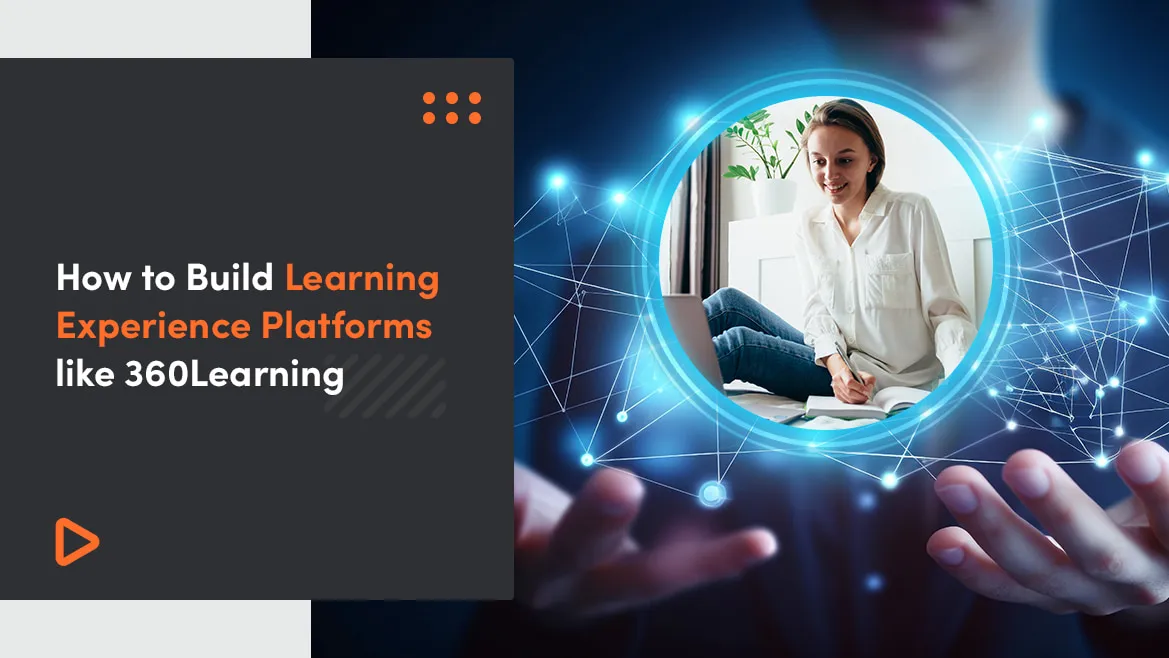Since the Covid Pandemic, the entire world has been shifted towards digitalization, making Digital Transformation the new norm of the 21st century. Two years of the pandemic has made businesses realize how significant digital transformation is for companies. Still, many other industries such as education have switched from traditional teaching methods to Digital classes.
This article will learn how to develop a digital transformation strategy for a business or an educational institute.
What is digital transformation? A quick recap
Organizations are undergoing a digital transformation as they embrace new and creative business models based on technology advancements. It's the practice of radically transforming anything with digital tools, and it refers to the use of technology and, perhaps, cultural changes to better or replace what was previously available. Digital transformation isn't a product or solution that can be purchased, yet it impacts everything IT touches in every business.
The state of the eLearning market

According to Forbes, digital transformation is a fast-growing field of business, with over $1.3 trillion in company investment in 2018. However, according to McKinsey data, 70% of digital transformation programs fail to reach their objectives.
The same is true for IT projects in general, and failing is almost always attributable to a shortage of communication of the solution's logic and potential advantages and a lack of buy-in from important stakeholders other than those steering the implementation.
Because of the apparent learning curve and disturbance to the status quo, digital projects often face opposition - "I don't have time for this right now" is a typical criticism regarding new digital / IT efforts.
Recent developments, however, have caused many to reconsider their positions, and now everyone is using remote collaboration and communication technologies to work from home. Face-to-face meetings are no longer an option for many occupations.
While Covid-19 caught us all off guard, everyone can and should be at the forefront of recent advancements that will have a detrimental effect on those who do not start preparing for the elevated rate of change made possible by emerging technology such as artificial intelligence (AI), the Internet of Things (IoT), and big data.
In their 2018 report, Skill Shift: Automation and the Future of the Workforce, McKinsey predicted that somewhere between 2016 and 2030, hours spent on Physical & Manual and Basic Cognitive tasks would decrease by 14% and 15% in the US and Western Europe, respectively, while hours spent on Technological work will increase by 55%.
Automation and artificial intelligence (AI) will be the driving forces behind this massive transition.
When everyone is experiencing disruption, proactive digital transformation may well be the solution to many of the new challenges that are currently being confronted or will be faced soon.
Why is it important for education organizations to embark on digital transformation?
Digital adoption is no more a 'nice to have,' but rather a necessary transformation for educational institutions to maintain relevance with their intended audience and long-term profitability. People have begun to comprehend the far-reaching power of education-driven technology in the aftermath of the epidemic.
As the digital world forces education providers to incorporate new teaching techniques, platforms, and technologies into the classroom and throughout the customer journey, schools that make this transition look seamless and quickly will undoubtedly outperform their competitors.
Many businesses, like EHL, have opted to create a "digital campus" to address the increasing demand for online, flexible, and distant learning opportunities.
Maxime Medina, COO and Deputy CEO of the EHL Group, once stated that incorporating technology into education is a "matter of survival."
"Covid-19 has created an extraordinary opportunity to accelerate digitalization and create a new learning environment that is a much better fit for today's students. Any organization is failing to embrace digitalization risks obsolescence, as a new wave of education start-ups is waiting to grab the baton. Investing in the digital education revolution today is an important priority for all education providers",
Maxime Medina

Benefits of digital transformation in the eLearning industry
Here are some of the ways that digital transformation will affect the eLearning industry in a corporate setting.
Customized Learning
The preferred learning style of office workers varies, just as it does for kids. Businesses can provide their workers with a tailored learning experience through digital transformation. Organizations can use AI and machine learning to determine if they want video material or text-based information and whether a 15-minute session is more valuable than a 1- or 2-hour program
Greater Accessibility
The period when mLearning was the finest thing that happened in the corporate Learning and Development sector is coming to an end. Accessibility is being extended beyond mobile by well-designed digital transformation plans. Enterprises are expanding platforms to include home assistant devices, wearables, and other IoT devices by merging IoT capabilities.
The goal of the platform extension activities remains the same: to enable non-time and non-geographical learning.
Greater Inclusion Of NextGen Technologies
The inclusion of augmented and Virtual Reality, blockchain, and AI technologies plays the most important role in digital transformation incorporating learning and skill growth. While we've previously shown how AI can play a proactive role in the domain through customized learning, let's look at how AR/VR and blockchain can be used.
Because blockchain is an ultra-secure technology, it assures that workers' data is safe and secure. Several groups are also investigating the technology's application in the issuance of digital certificates.
When it comes to AR/VR, various industries are utilizing the technological combo to provide employees with hands-on learning opportunities. In the healthcare and manufacturing industries, the use cases are most obvious.
Challenges of digital transformation in the education sector
Like any other transformation, Digital Transformation comes with many hurdles and challenges. Here’re some of the most common issues faced by the education sector in transforming to digital.
Adoption Reluctance
Even though 70% of public sector employees believe their digital skills lag behind private-sector employees, important decision-makers make only minor attempts to rectify the situation. The fear of failure prevents businesses from experimenting with new technology and methods.
Lack Of Digital Transformation Expertise
The shortage of digital transformation professionals in-house is the next key barrier that businesses face. Many organizations fail to see that change is an ongoing cycle, not a series of stages. So, while they can employ a consultant at the start, they will eventually need to collaborate with an agency that will accompany them on their path and leave them when they have a fail-safe system in place.
Data Silos
The existence of data silos is the next key obstacle, and it is the cause of the collapse of the majority of digital transformation attempts. Traditionally, there are no centralized data storage systems in typical enterprises. As a result, data that could aid learning attempts are stored in numerous silos that hardly ever interact with one another. As a result, making critical corporate choices or implementing educational programs becomes more challenging.
Presence Of Legacy Systems
Businesses, like data silos, have legacy systems, which are non-frequently upgraded technology-driven systems and infrastructure. The issue with legacy systems is that they make it extremely difficult to implement new digital advancements into them. Because of the incompatibility, there is a larger requirement to upgrade, customize, or replace present systems to achieve more integration.
Digital transformation trends in education

Here are examples of the best digital transformation trends in the education sector.
Skills training
Educational institutions' major business purpose is to educate and upskill people to flourish and achieve professionally. Businesses can establish a digitally-driven learning program that offers their employees the skills they need to expand their jobs while moving the company ahead by adopting this method internally.
Integrate and leverage digital data
To understand where each insight originates from and how it can help the organization, it's critical to connect and exploit corporate data sources effectively.
It won't work until you try to figure out which aspects of data are the most valuable to your company. Implementing the finest technologies that allow executives to examine these indicators regularly is a vital first step.
Automation
Automation is presently used by roughly 49% of organizations across all industries, with more than half of B2B enterprises utilizing the technology as part of their strategy.
Even with modest infrastructure, integrating automated systems and technologies to aid with operating processes in the education sector can lead to tremendous productivity improvements. Such solutions can help businesses save money in the long run by focusing on more productive initiatives or activities.
The power of mobile
With 98% of 17 to 24-year-olds and 97% of 25 to 34-year-olds having a smartphone, the younger generation is mobile-focused.
Mobility is a modern-day need, allowing potential consumers to access information or materials much more quickly. Mobile learning is a powerful tool for delivering value, but mobile-based advancements don't have to be confined to course content.
Emerging technologies
Emerging innovations such as speech technology, artificial intelligence, virtual reality, chatbots, and machine learning are worth investigating because they may help organizations become more functional, efficient, and cutting-edge while enhancing marketing and user experience initiatives.
Machine learning as the future of education
Machine learning is a cross-industry trend that's expected to continue rising for the next few years. It's a revolution happening right before our eyes, and those late to the party might find themselves outpaced by their competitors.
Using ML for a more customized learning experience
Machine learning can create extensive records for each student, present ideas, and set objectives tailored to their strengths and learning styles.
On the other hand, technology may assist lecturers in determining which strategies are most effective with their students and which are not, allowing them to make improvements that will help students better comprehend the course topics.
Predicting career paths
Advanced machine learning algorithms can analyze data from a student's college application, essays, standardized exams, and instructor recommendations to estimate what they are likely to thrive in. These solutions have the potential to assist students in maximizing their potential in their areas of strength and interest while reducing their deficiencies, allowing them to become better-prepared professionals in the future. A student's grades and activities can also be used to determine prospective career choices using technology.
Improving the grading system
Teachers will soon use machine learning to examine students' assignments and identify plagiarism and other breaches. ML offers a lot of promise to guarantee that marks aren't influenced by an educator's perspective toward a particular student, effectively giving ratings based only on the students' performance.
How to develop a digital transformation strategy? A digital transformation journey.
A successful digital transformation requires a clear vision because by just simply implementing cutting-edge technologies, you as a business wouldn't get the return on your investment. Each organization has its vision of success. By following these steps, an organization can successfully build a perfect digital transformation strategy.
- Identify your business goals. Deciding to undertake a digital transformation project is a guaranteed formula for catastrophe because everyone else is doing it. Ensure that everyone on the team knows why you're doing this before you start. You must agree with your current condition and have a clear sense of direction. Key performance indicators (KPIs), or measures that help track your progress toward your objective, are often included in the most effective digital transformation goals.
- Hire an expert. There's a strong chance that no one on your present team has ever successfully led a digital transition. If that's the case, you might want to consider hiring some assistance. This might include recruiting a full-time employee with digital transformation experience or engaging the services of an outside consulting firm. Other essential employees in IT, marketing, or other areas who have experience or skill in the type of change you want to undertake may also be hired by certain firms.
- Build on your strengths. It's tempting to toss out everything you've done so far and start again, but this is typically a bad idea. Consider what you're already good at. Do you have a lot of repeat customers? What is the meaning of your brand? As you go through your digital transition, be sure you're not doing anything to jeopardize your current success. Digital transformation initiatives that achieve their objectives frequently appear to be a logical extension of their earlier digital efforts.
- Put yourself in your customers' shoes. The emphasis on customer experience is prevalent throughout digital transformation frameworks (more on that below). The way your consumers engage with your company will alter as a result of digital transformation. You must ensure that this new experience is favorable and promotes your desired brand image.
- Establish new procedures and policies. If no one utilizes new technology, it is useless. Consider how you want your staff to utilize a new product or application before implementing it. Your employees will most likely return to the old method of doing things if you don't clearly outline processes and put in place enforcement tools to ensure that they are followed. In certain circumstances, digital transformation may necessitate a total culture shift, which can be a time-consuming and tough process.
- Iterate. You won't be able to completely alter your company overnight. Instead, make a minor adjustment, assess, and repeat. Digital transformation initiatives implemented in stages are more likely to succeed than large-scale changes implemented all at once. If you keep your plan flexible, you can make minor adjustments along the road and respond quickly to changing circumstances.
- Consider following a digital transformation framework. Many analysts and consulting businesses have developed digital transformation frameworks that might assist you in putting your plan into action. Remember that your real plan should be unique to your company, but adopting a tried-and-true approach will help you avoid skipping important steps or duplicating mistakes made by other companies. Although a framework isn't required, it may be beneficial, especially if your management team has no experience with digital transformation.
The Relation Between Agile and Digital Transformation
According to the World Economic Forum, digital transformation is about implementing the correct culture change program as it is about implementing new technology. Organizations must rapidly determine what their business needs are and how they will achieve them due to digitization. Adopting Agile methodologies is the greatest option for many CIOs to uncover these answers.
Agile management has its roots in software development, but as the Harvard Business Review points out, it has expanded well beyond product development and manufacturing. While Agile will not be implemented in the same manner in every company, the fundamental ideas – decentralized decision-making, cross-organizational teams, and cross-team empowerment – are likely to connect with most IT executives.
The biggest advantage of an Agile strategy, according to CIOs, is culture. IT personnel and line-of-business employees may iterate around an issue and implement digital systems and services fast by collaborating in small, cross-business groups to examine difficulties and offer solutions.
According to Compass Group CIO Jon Braithwaite, these interconnected trips ensure that no one receives a bad shock after the trial. They also imply that workers from all company parts iterate to discover the highest potential return on a digitization investment.
Summary
According to many experts, just around one-third of businesses effectively navigate their digital transition. Many consultants, suppliers, and other specialists have created digital transformation frameworks to assist businesses in increasing their performance.
A digital transformation framework is a step-by-step guide to putting a digital transformation strategy into action. It is usually accompanied by a visual depiction of how the consultants see a digital transformation. If you are looking for such an expert company who can help you build a perfect digital transformation strategy for your educational institute or business then contact us at Selleo.




